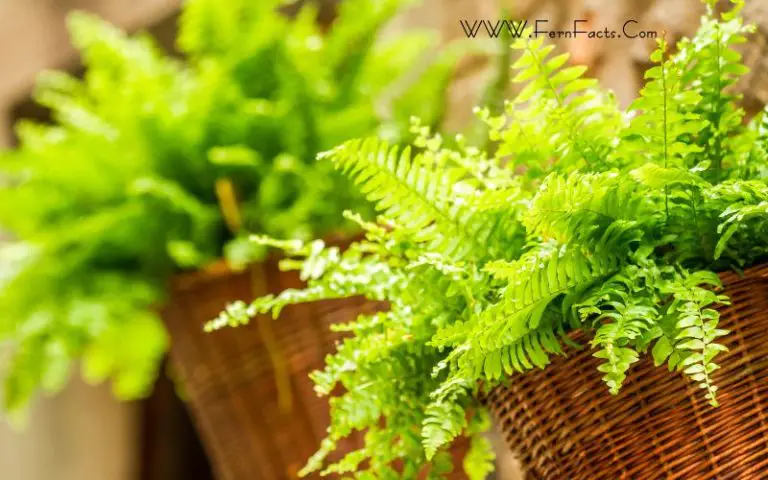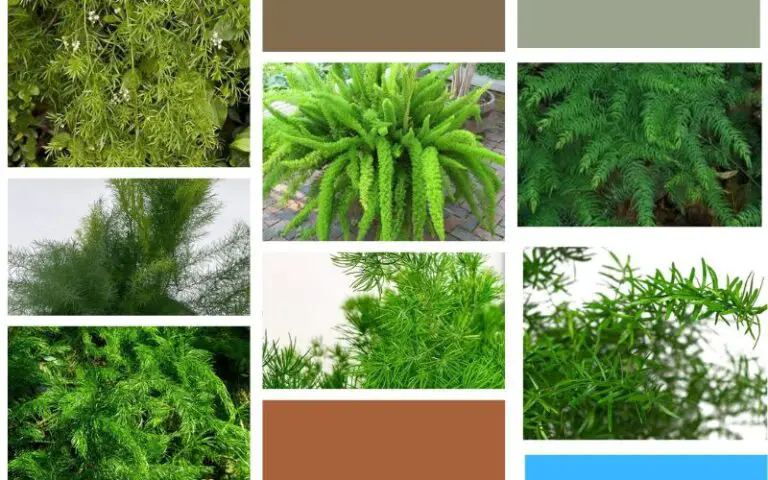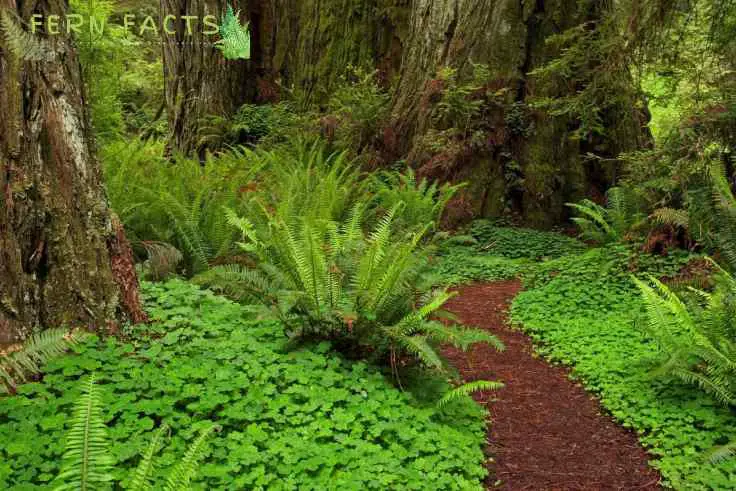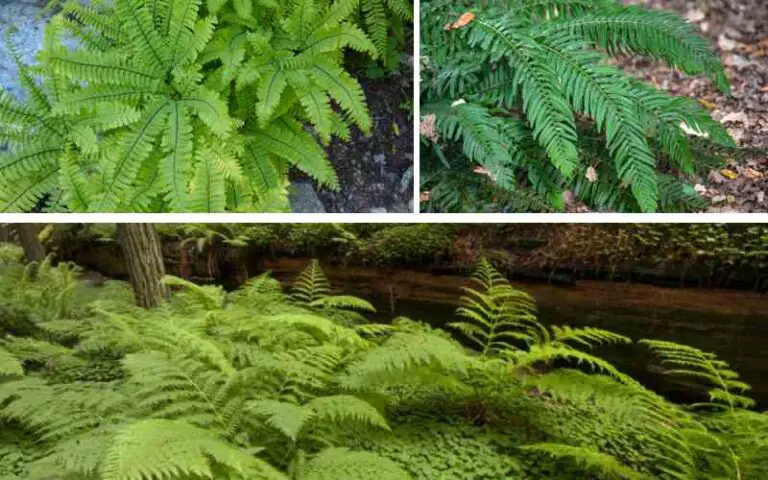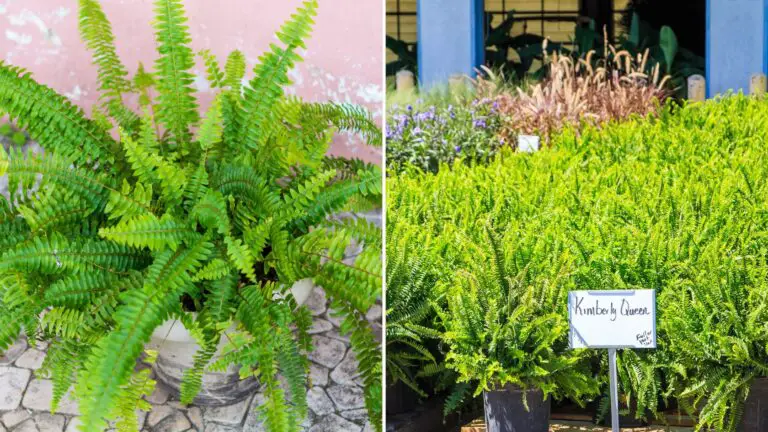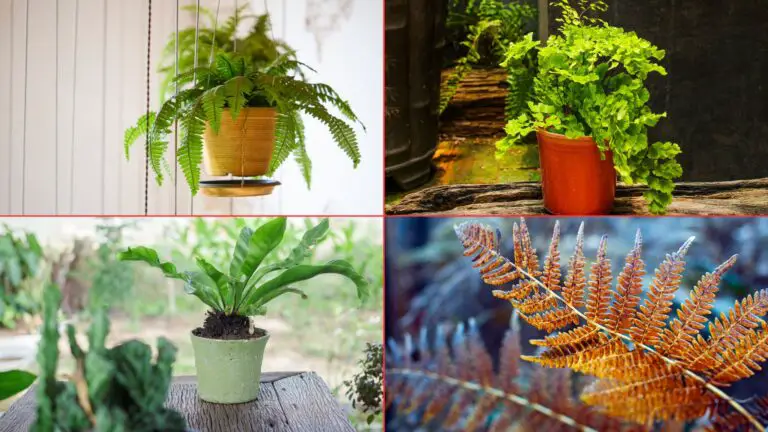Best Evergreen Ferns for the Northwest
If you live in the northwest region, then these amazing evergreen ferns will be one of the blossomed ferns for you to have in your garden.
There’s no comparison between evergreen ferns in terms of their beauty, sustainability, and elegant appearances throughout the year. Therefore, in this article, I’ll provide you with a list of evergreen Northwest ferns to plant along with their characteristics.
By understanding each fern’s varieties and requirements, you can easily grow these ferns at your house and make them thrive. So let’s start with the best evergreen ferns in the Northern Hemisphere.
Best Evergreen Ferns for the Northwest
Let’s look for some suitable and prominent ferns for the Northwest regions. Since evergreen ferns remain fresh, lush, and foliage throughout the years, therefore Northwest these ferns are one of the desirable ferns to have in your garden.
Deer Ferns
- Botanical name: Struthiopteris spicant or Blechnum spicant
- Common name: hard fern, deer fern
- Family: Blechnaceae
- Plants: Evergreen plant
- Native range: Pacific Northwest
- Native habitats: Woodlands, grasslands, mountains, hillsides, etc.
- Shade requirements: full or partial
- Height: around 45 to 60 cm
- Width: around 45 to 90 cm
- Soil: acidic, neutral, moist well-drained
- Hardiness: 5,6,7,8
Deer ferns or hard ferns are the most common evergreen ferns that are visible to Northwest states including Europe, western Asia, Northern Africa, and western North America as well.
These deer ferns have two different types of leaves: sterile leaves (evergreen) and fertile leaves (deciduous). Sterile leaves form flat Wavy margins by distributing 5-8 mm wide. On the contrary, fertile leaves are much narrower than the sterile ones.
Deer ferns prefer moist places like woodlands, grasslands, hillsides, banks of rivers, streams, and wet forests with filtered shaded rays of the sun.
Similarly, they also prefer acidic soil with rich humus to thrive. Besides, These Northwest deer ferns also achieved the award of Garden Merit from the Royal Horticultural Society.
Chilean Hard Ferns
- Botanical name: Parablechnum cordatum or Blechnum cordatum or Blechnum chilense
- Common name: Chilean hard fern
- Family: Blechnaceae
- Plants: Evergreen plant
- Native range: Chile, South America
- Native habitats: Woodlands, grasslands, mountains, hillsides, etc.
- Shade requirements: full or partial
- Height: around 2 to 6 ft
- Soil: acidic, neutral, moist well-drained
- Hardiness: 7,8,9
Chilean hard ferns are another evergreen Northwest fern with their bold textured fronds. Like most other fern, these Chilean hard ferns also prefer dappled shade or partial shade to full shade.
They can also grow best in woodland gardens, and tropical forest areas side by side. Additionally, they also prefer a moist atmosphere around themselves.
These ferns have the special adaptability to tolerate Northern winter seasons however heavy snow or frozen situations can damage their fronds.
Similar to deer ferns, these Chilean hard ferns also received a Garden Merit award from the Royal Horticultural Society because of their unique characteristics and features.
Autumn Ferns
- Botanical name: Dryopteris erythrosora
- Plants: Semi-evergreen
- Native range: Asia, Japan, China, and the Philippines
- Natural Habitats: Woodlands, low mountains
- Shade requirements: full or partial, adaptable under full sun
- Height: around 1 meter
- Soil: tolerance of the pH level of the soil with a drainage system
These autumn ferns are also known for their unique beauty in the Northern Hemisphere. These ferns are of colorful ferns which are copper shield ferns that can enhance your garden’s look.
These autumn ferns are also usually native to Japan, Asia, China, and the Philippines. Besides, they also prefer woodland and low mountain areas as their habitats.
During spring, their fronds’ coloration changes from a coppery border to a red-brown morph. Later, it becomes green after it becomes fully grown or becomes an adult.
These autumn ferns thrive in moist and damp soil under shaded places. They prefer rich acidic soil with a well drainage system.
Bracken Ferns
- Botanical name: Pteridium aquilinum
- Plants: Deciduous plants
- Region: Eurasia, North America
- Habitats: coniferous woodlands
- Shade requirements: partial or full sun
- Height: around 1 meter
- Soil pH: acid, neutral or alkaline, moist well drained
- Soil type: sand, clay and loam
- Tolerance: drought
Common bracken ferns are another renowned ferns that are highly distributed in the Northwest regions.
These ferns are known for their invasive nature which sometimes gives hard times to people and for the forest itself in terms of managing their spreading habits. Still, they are famous ferns to grow in various lands, gardens, yards, and ground covers because of their spreading nature.
Similarly, They are also the best choice for cottage gardens and woodland gardens. Keep in mind that These Northwest ferns are very dangerous or toxic to horses as well as other animals.
Even these ferns can cause stomach cancer in humans or any other living things in the world. Nonetheless, ancient Japanese and Korean countries used to eat these fern shoots for health benefits as well.
They mostly soaked it overnight to leave all the toxic elements in it. Nevertheless, it is still not suggested by many countries due to its negative side.
Sword Ferns
- Botanical name: Polystichum munitum
- Common names: Sword fern, western sword fern
- Plants: Deciduous plants
- Native Region: North America
- Shade requirements: partial or full sun
- Height: around 60 to 120 cm
- Soil type: Chalk, clay, loam and sand
- Soil pH: acidic, alkaline, and neutral
- Hardiness: 3 to 8
Sword ferns are native ferns that are widely distributed in Northwest gardens, woodland, and other forest areas. Since they are evergreen plants, they are mostly native to North America’s forest areas.
However, you can also find them on the Pacific coast, Alaska, and Colombia as well. These Northwest ferns prefer moist coniferous woodlands that retain their soil well-hydrated.
In the garden or native habitats, this sword fern can grow up to 1.5 meters long by distributing its fronds up to 50 to 180 cm. These Northwest ferns also can tolerate various types of soil mixtures as long as the soil is moist enough.
You can easily grow these Northwest ferns at your house by making acidic soil with rich humus. This rich humus will maintain the soil’s nutrients and moisture northwest ferns can tolerate some sort of dryness but not for longer.
You have to water them by maintaining the moisture level in their soil.
Christmas Ferns
- Botanical name: Polystichum acrostichoides
- Plants: Evergreen
- Native range: North America
- Shade requirements: Full or partial shade
- Height: up to 1 m
- Soil: neutral or alkaline and moist, well-drained
Christmas ferns are evergreen Northwest plants that are mostly native to North America including Nova Scotia, Florida, and Texas. These Northwest ferns have beautiful leather ferns that give glossy, green fronds over the year.
Generally, these ferns grow best under shady habitats like woodlands, rocky slopes, and stream banks. Moreover, these ferns are very adaptable ferns for cultivation in the yard or in the natural park or gardens as a garden cover.
These Northwest evergreen plants are also fond of moist damp environments with filtered sunlight. You can also use them as ornamental plants for your garden to make the garden look more natural.
Summing Up
In the final statement, Northwest has a phenomenal variation of ferns in their land. If you are a Northern citizen, you can easily buckle up these above-mentioned ferns in your list for your gardening purposes.
Since most of the ferns prefer shaded places, rich soil, and damp moist conditions hereby, you can easily mimic Northern ferns wilderness in your mini garden where they will thrive.


